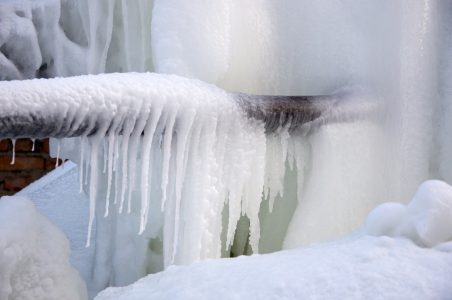Essential Advice to Prevent Frozen Plumbing in Winter: Specialist Guidance
Essential Advice to Prevent Frozen Plumbing in Winter: Specialist Guidance
Blog Article
Right here below you will find some brilliant additional info relating to How to Prevent Your Pipes From Freezing.

Cold weather can ruin your plumbing, especially by freezing pipelines. Right here's just how to avoid it from taking place and what to do if it does.
Introduction
As temperature levels drop, the risk of icy pipes rises, potentially leading to costly repair work and water damage. Recognizing how to stop frozen pipes is vital for property owners in cool climates.
Comprehending Icy Pipes
What causes pipelines to freeze?
Pipes freeze when subjected to temperatures below 32 ° F (0 ° C) for prolonged periods. As water inside the pipes ices up, it increases, taxing the pipeline wall surfaces and potentially causing them to rupture.
Risks and damages
Icy pipelines can cause water interruptions, residential property damage, and pricey repair work. Ruptured pipelines can flooding homes and cause extensive structural damages.
Indicators of Frozen Piping
Identifying icy pipelines early can stop them from bursting.
Exactly how to determine icy pipes
Seek reduced water circulation from faucets, unusual smells or sounds from pipes, and noticeable frost on revealed pipes.
Prevention Tips
Shielding at risk pipelines
Cover pipes in insulation sleeves or use warmth tape to safeguard them from freezing temperature levels. Concentrate on pipelines in unheated or outside areas of the home.
Home heating methods
Keep indoor areas effectively heated, specifically areas with pipes. Open closet doors to enable warm air to flow around pipelines under sinks.
Protecting Outside Plumbing
Yard hose pipes and outside taps
Separate and drain garden hoses before winter season. Mount frost-proof faucets or cover outside faucets with shielded caps.
What to Do If Your Pipes Freeze
Immediate activities to take
If you presume frozen pipes, maintain faucets available to relieve stress as the ice thaws. Use a hairdryer or towels taken in warm water to thaw pipes gradually.
Long-Term Solutions
Architectural adjustments
Take into consideration rerouting pipes away from exterior wall surfaces or unheated areas. Include extra insulation to attics, basements, and crawl spaces.
Updating insulation
Invest in high-grade insulation for pipes, attic rooms, and wall surfaces. Appropriate insulation aids preserve regular temperatures and decreases the threat of frozen pipes.
Conclusion
Avoiding icy pipelines needs positive actions and fast feedbacks. By understanding the causes, indications, and safety nets, homeowners can protect their pipes during cold weather.
5 Ways to Prevent Frozen Pipes
Drain Outdoor Faucets and Disconnect Hoses
First, close the shut-off valve that controls the flow of water in the pipe to your outdoor faucet. Then, head outside to disconnect and drain your hose and open the outdoor faucet to allow the water to completely drain out of the line. Turn off the faucet when done. Finally, head back to the shut-off valve and drain the remaining water inside the pipe into a bucket or container. Additionally, if you have a home irrigation system, you should consider hiring an expert to clear the system of water each year.
Insulate Pipes
One of the best and most cost-effective methods for preventing frozen water pipes is to wrap your pipes with insulation. This is especially important for areas in your home that aren’t exposed to heat, such as an attic. We suggest using foam sleeves, which can typically be found at your local hardware store.
Keep Heat Running at 65
Your pipes are located inside your walls, and the temperature there is much colder than the rest of the house. To prevent your pipes from freezing, The Insurance Information Institute suggests that you keep your home heated to at least 65 degrees, even when traveling. You may want to invest in smart devices that can keep an eye on the temperature in your home while you’re away.
Leave Water Dripping
Moving water — even a small trickle — can prevent ice from forming inside your pipes. When freezing temps are imminent, start a drip of water from all faucets that serve exposed pipes. Leaving a few faucets running will also help relieve pressure inside the pipes and help prevent a rupture if the water inside freezes.
Open Cupboard Doors
Warm your kitchen and bathroom pipes by opening cupboards and vanities. You should also leave your interior doors ajar to help warm air circulate evenly throughout your home.

I recently found that blog entry about How to prepare your home plumbing for winter weather while browsing the web. Are you aware of someone else who is intrigued by Preventing and dealing with frozen pipes? Why not promote it. We value your readership.
Click Here To Read More Report this page